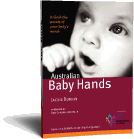 Autism is something which is very close to my heart. When I was 10 years old my baby brother Patrick was born. I was the very proud older sister but as the months passed, my baby brother was not like all my other friends’ baby brothers. I remember when Patrick was 3 years old and was still not talking. This was causing a lot of anxiety for my parents and a lot of frustration for Patrick.
Autism is something which is very close to my heart. When I was 10 years old my baby brother Patrick was born. I was the very proud older sister but as the months passed, my baby brother was not like all my other friends’ baby brothers. I remember when Patrick was 3 years old and was still not talking. This was causing a lot of anxiety for my parents and a lot of frustration for Patrick.
Sometimes there were temper tantrums, sometimes we knew what he wanted first guess. He seemed locked away in his own world and we did not have the tools to reach him. While Patricks diagnosis took a number of years before it was confirmed, during this pre-verbal time, baby sign language would have been a fun and useful tool to use with my baby brother.
I believe it would have made a real difference in Patricks early years. Patrick loved books and loved when someone read to him, which I did a lot. He loved looking at the pictures and the voices I would put on. He also loved when I sang nursery rhymes and did the actions. If I knew then what I know now, what would I have done differently with my brother?
I would have downloaded the Australian Baby Hands free baby sign language chart to learn 6 introductory signs. I would have used baby sign language with Patrick throughout the day, throughout his routines especially. I would teach him signs for his favourite things such as books, cars, teddy etc. I would read to him and incorporate signs into his story books. I would teach my parents signs to also help them communicate with my brother and I would teach my other brother the signs so he too could communicate with him. I would sing him nursery rhymes which did not have actions and do baby sign to the words.
Researchers suggest that the use of baby sign language increases the chances of autistic children learning spoken language while also providing them with a communication tool. Autistic children are able to learn baby sign language successfully as signs can be physically guided unlike speech.
You can move your child’s hands to demonstrate the sign you want them to create. Some sign language is iconic which means some signs produced symbolise the word we are trying to communicate. An example of an iconic sign would be the sign for car, which is the action of steering the wheel of a car. It is very clear what you are trying to communicate through this action.
Research has shown that the left hemisphere brain functions of autistic children have a differential disturbance. Since it is believed that signing is processed in the right hemisphere of the brain, this may be the reason why signing is easier for autistic children to learn. It is also believed that through acquiring sign language in the early days, the child is able to build up cognitive structures which are the basis for later learning.
I have had many emails over the years from parents who have Autistic children and have used baby sign language with them. Most parents have experienced a lot of benefit from using baby sign language with autistic children. For those who have experienced benefits, they have included reduced frustration for parents and children, an insight into their baby’s mind and a communication tool the whole family can use. As with all children, autistic children are individuals and some will benefit greatly from baby sign language and some may not be interested in it at all.
I would recommend trying baby sign language with all children, especially any child who has any sort of communication difficulty as it can break down the barriers of communication reduce frustration and help you gain an insight into your child’s mind.
